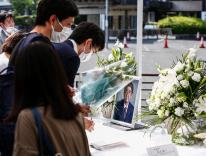Kind of Blue
Having been very much involved in the performance of Mary Lou Williams’s Mass in Rome in January 1969, I write to express my thanks to Ian Marcus Corbin for his excellent article “A Jazz Mass?” (December 7), and to add a few points from my memory of the occasion.
Not long after Mary Lou came to Rome and began pulling together singers and musicians from the students at the North American College, and various members of religious orders, I received a call from the Office of Worship in the Vatican asking me to help them. She was pushing to perform the Mass at a papal liturgy, and saw such an event as a validation both of jazz and of her role as a Catholic musician. She was, however, totally naïve about how Rome works.
At that time, Pope Paul VI was wrestling with the approval of the Missa Normativa. He had announced his approval in April 1968, but was still hesitating, sending back texts for revision. Complaints from bishops around the world about abuses had started to come in, which upset him even more. But when it came to music, he was tone-deaf. He lacked the musical tastes of Pius XII, John Paul II, or Benedict XVI. Pope Paul thought Gregorian chant and perhaps some polyphony were the only kinds of music appropriate to the liturgy.
But he was not without a sense of humor. About a year before Mary Lou arrived in Rome, Pope Paul, still worried about the Missa Normativa, decided to experience the new Mass himself in three forms: a very simple form with almost no singing, a form with everything sung, and then a mixed form with just the essentials sung. The three forms were celebrated over three evenings, and for each one the pope was among the congregation, about twenty-five of us. For the second Mass—the one with everything sung—students of the German College did the singing. Afterward, he invited a few of us into his study to discuss it. As we were sitting down, he turned to me and asked: “Father Abbot, what do two Italians do when they meet abroad?” “I don’t know, Your Holiness,” I replied. “They open a barbershop,” he said. “What do two Greeks do when they meet abroad?” the pope asked. “I don’t know, Your Holiness.” “They open a restaurant,” he said. “And what do two Germans do when they meet abroad?” “I don’t know, Your Holiness.” “They sing in four-part harmony.”
When the possibility of performing Mary Lou’s jazz Mass for the pope fell through, we searched for a suitable church. The Latin American College Chapel seemed best, because it was somewhat modern and had good acoustics. The Mass was to be celebrated on the first anniversary of the death of Martin Luther King Jr. When I visited the chapel for the rehearsal, I found TV cameras everywhere—along with four reporters from the major networks. The piano and the musicians were center stage and the altar almost hidden. But as the rehearsal went on, it became clear that the musicians were not up to the task. Mary Lou was wonderful, but she could not turn amateurs into professionals in an afternoon. The singing did not come naturally to the young men involved. Mary Lou’s idea of a Mass was naturally that of the old traditional form—Lord Have Mercy, Glory to God, Holy, Holy, Holy, and Lamb of God, with a beautiful bluesy song for the Offertory and for Communion. But I could not have conceived of celebrating Mass under those conditions.
When I visited the vicariate for a final meeting before the jazz Mass was to be performed, the bishop of the region was waiting for me. It was decided that I celebrate a “quiet” Mass in honor of Martin Luther King Jr., with Mary Lou’s Mass sung afterward as a concert. After I announced that decision—which I agreed with—most of the reporters lost interest. They wanted to make sure it hit the evening news in New York, and seemed satisfied with the bits they had already recorded. But Mary Lou was truly desolate.
The event made it clear that liturgical renewal would be highly culturally orientated, whether we liked it or not. A type of music that is an instrument of prayer for one congregation might not be for another. What’s more, musicians would have to learn that there is a place in every culture for religiously inspired music, but only if it is of high quality, but not all such music is appropriate for liturgy. I’m afraid Mary Lou did not seem to understand that explanation, nor was she encouraged by it.
(Most Rev.) Rembert G. Weakland
Milwaukee, Wisc.
The writer is archbishop emeritus of Milwaukee.
Drummer Boys
Ian Marcus Corbin’s article about jazz in liturgical music brought back memories of one of the most amazing and beautiful Masses I’ve ever attended. Several years ago I was in central Haiti on a medical mission trip. One Sunday we went to Mass in a nearby town, and it happened to be the children’s Mass for the Catholic school.
The church was filled with Haitian grade-schoolers. The children, who were perfectly behaved, sang the hymns beautifully, with the accompaniment of two eighth-grade boys playing bongo drums. How can bongo drums make beautiful music? Hard to say. But they did that day.
Art Fleming
Pittsburgh, Pa.
Please email comments to [email protected] and join the conversation on our Facebook page.
Previous Story
Broken Beauty
Next Story
Drawing a red line against war with Iran


